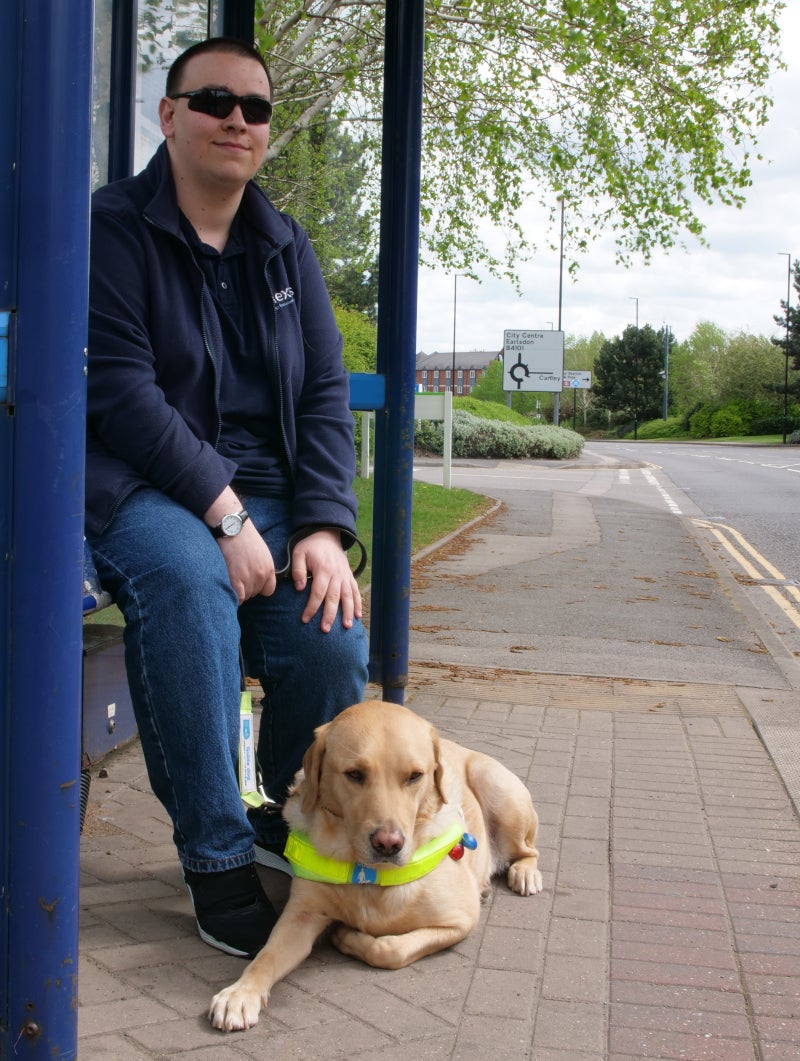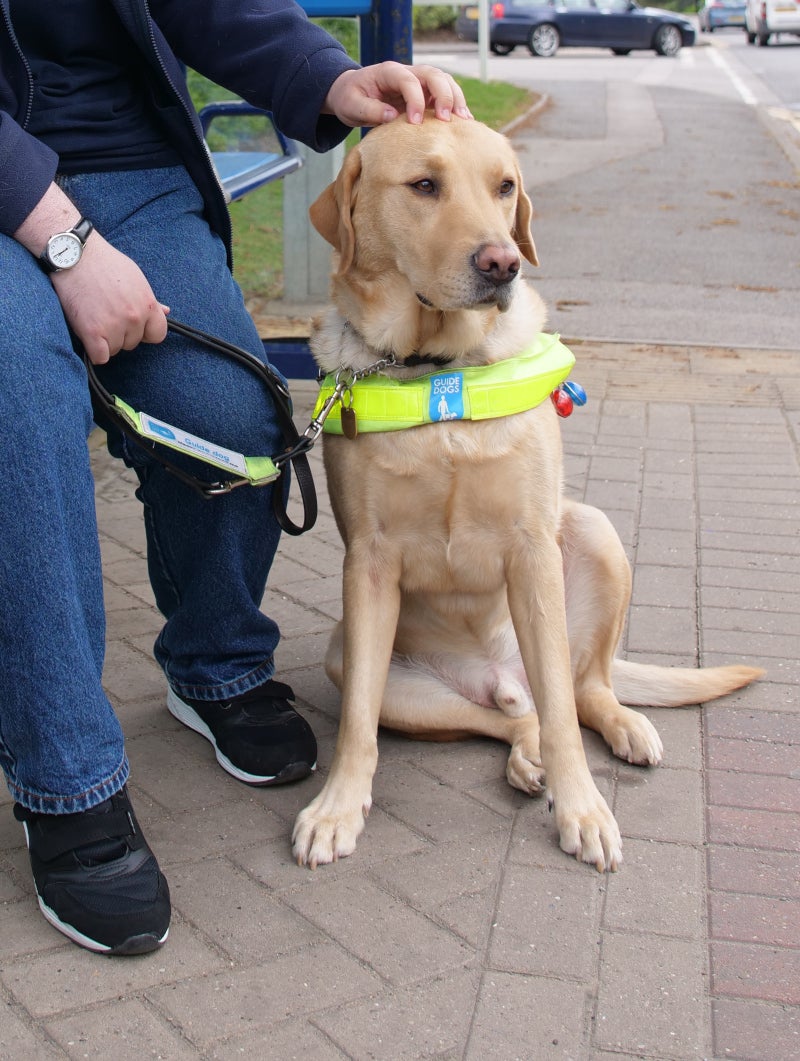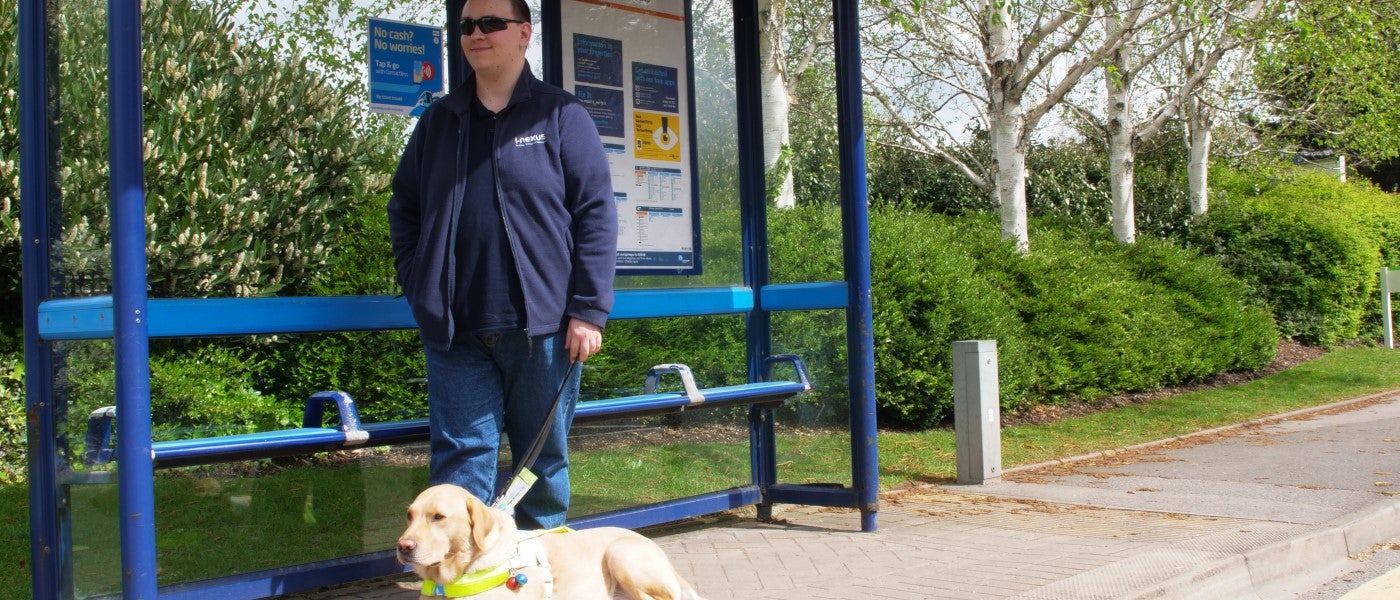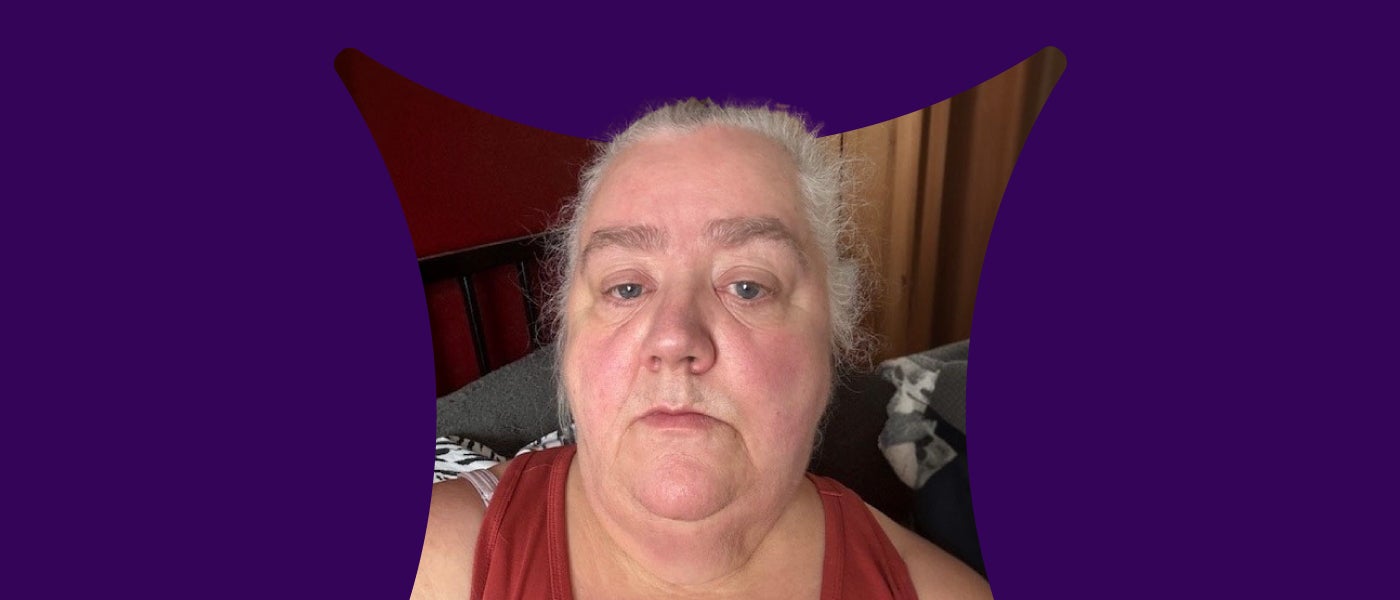- Home
- News and stories
- My guide dog and I rely on public transport
My guide dog and I rely on public transport
 31 July 2019
31 July 2019
Like many disabled people, I rely on public transport. Travelling can be a frustrating part of my day, especially as someone who has a limited amount of vision remaining.
I’m the proud owner of a guide dog called Carlo. He’s very excitable and eager to be outside for walks and adventures. Carlo fundamentally gives me my freedom and ability to visit new places, but without public transport, we’d both be stuck.
Transport planning is a big challenge for many disabled people
I was brought up using public transport and try not to depend on anyone to drive me places, so I’m quite confident and independent.
My biggest challenge with public transport is the amount of time involved with planning. A trip can take me double, or even triple the time to travel. Not to mention, having to leave almost an hour early in case of the usual delays or cancellation of services.
I’d be a burden to friends if I didn't have public transport
I think public transport is overall, quite efficient. And with more and more smartphone maps and apps on the market, I’m noticing it’s a lot quicker and easier to plan journeys and get live updates, even before leaving my front door.
I personally quite enjoy public transport. It allows me to feel independent and have a fulfilled life - travelling to and from work, taking shopping trips, hospital visits and meeting with friends and family.
Without it, I’d be a constant burden - asking friends, family and colleagues to drive me places and wait for me to do things.
Without public transport I wouldn’t have found employment
When I was job hunting, I often travelled for job interviews. I was so committed to getting employed, I was willing to move to a new part of the country.
Without public transport, I wouldn’t have been able to attend interviews, or have the chance to meet potential employers.
Thankfully, I was offered a job in my home city. To avoid getting 2 buses to and from work, I decided to move home, about 15 minutes’ walk away. This gave me and Carlo some exercise too, instead of sitting on buses for over 2 hours every day.
By moving closer to work, it hasn’t meant I’ve escaped using public transport, because I’m often out of the office, working remotely and attending events or training days.
By having years of experience using public transport, it empowered me to be able to commit fully to my job and get the most out of my role, without having to ask others for support.

3 ways I’d improve public transport for disabled people
If I had a magic wand, there’d be some changes I’d love to make to public transport, to give disabled people more confidence when travelling.
1. Give bus drivers disability awareness training
Whenever I need to ask the bus driver a question, such as “Does this bus go past Preston Court?” often the driver either nods or shakes their head, which really surprises me.
I understand they’re sat behind protected glass and it can be difficult to hear them, but when I’m stood there with a Guide Dog and wearing sunglasses, it seems obvious to me that I’m blind, so far less likely to see head movements through a reflective piece of glass!
I’ve also lost count of the amount of times I’ve been with friends, who are wheelchair users, and the drivers have admitted they don’t know how to lower the ramp properly.
This shows a basic knowledge gap that needs fixing. Let’s give drivers the proper training and skills to assist disabled people.

2. A dedicated space for guide dogs on trains, buses and tubes
Travelling in rush hour on public transport can be a whole other story when you’re juggling big bags and a guide dog.
Having a guide dog certainly tackles the challenge of walking through a crowded bus or train station, as they cruise along and often enjoy the task of dodging people walking toward you with their faces in their phones! But the real problem begins when getting on the transport itself. When I’m travelling with Carlo, a top priority is to make sure he’s comfortable and relaxed inside a moving vehicle. For example, the harness is removed, and he’s free to lay down and rest fully.
This isn’t easy when buses and trains are really busy and there’s barely room for the people, let alone for Carlo to lay down and stretch out.
I’ve been known to sit in the wheelchair spaces if they’re available, just so Carlo has the room to relax. But these are often filled up with bags and pushchairs. I’m often at a bit of a loss, and feel worried about Carlo’s safety when travelling at peak times.
Having dedicated spaces for guide dogs to lay down, not be in the way, or need to constantly move, would be a really nice addition. A dedicated space would also give guide dog owners some authority to say those spaces are for us, and we wouldn’t have to take up the spaces meant for wheelchairs.

3. Not having to book train assistance in advance
Thankfully, I can jump on and off trains without assistance, but I have many disabled friends who depend heavily on their booked assistance service.
I think the current process of booking assistance over the phone, with more than 24 hours’ notice, is well thought through but hardly ever executed with the same efficiency!
It’s rarely convenient to have to plan so far in advance and contact separate train providers to give every detail of your journey.
Why don’t we digitise this problem by having a single website booking service for all the different transport providers? That would cut down the loss of communication and not result in train staff having to be reliant on their printed notes of each customer, and where they’re needed next.
Overall, these 3 changes may seem quite minor, but when inaccessible public transport restricts your ability to use it on a regular basis, it’s just another added stress and anxiety when travelling.
Join our campaign
We need your help to make change happen. Tell us what promises you want to see public transport companies make to make it easier for disabled people to travel.
 31 July 2019
31 July 2019








